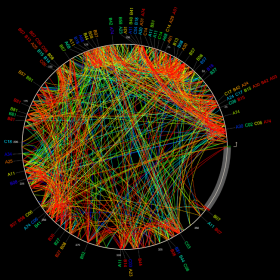HIV-1 Adaptation to HLA: A Window into Virus–Host Immune Interactions
- Jonathan M. Carlson ,
- Anh Q. Le ,
- Aniqa Shahid ,
- Zabrina L. Brumme
Trends in Microbiology | , Vol 23(4): pp. 212-224

HIV-1 adaptation to HLA: a window into virus–host immune interactions
 This review with Zabrina Brumme gives an overview of HLA-mediated escape. We go over the history of HLA-mediated escape, showing how studying HIV adaptation has lead to fundamental insights into virology, immunology, and vaccine design. In effect, the rapid rate of HIV mutation, coupled with the astonishing plasticity of the virus, means that the virus is constantly exploring ways to adapt to its environment. Studying these adaptations provides an excellent starting point for understanding how the immune system works and what factors constrain viral evolution. A free version will be available from the publisher until May 15. After that, you can read the authors’ version (pdf) free.
This review with Zabrina Brumme gives an overview of HLA-mediated escape. We go over the history of HLA-mediated escape, showing how studying HIV adaptation has lead to fundamental insights into virology, immunology, and vaccine design. In effect, the rapid rate of HIV mutation, coupled with the astonishing plasticity of the virus, means that the virus is constantly exploring ways to adapt to its environment. Studying these adaptations provides an excellent starting point for understanding how the immune system works and what factors constrain viral evolution. A free version will be available from the publisher until May 15. After that, you can read the authors’ version (pdf) free.
Abstract
HIV-1 develops specific mutations within its genome that allow it to escape detection by human leukocyte antigen (HLA) class I-restricted immune responses, notably those of CD8+ cytotoxic T lymphocytes (CTL). HLA thus represents a major force driving the evolution and diversification of HIV-1 within individuals and at the population level. Importantly, the study of HIV-1 adaptation to HLA also represents an opportunity to identify what qualities constitute an effective immune response, how the virus in turn adapts to these pressures, and how we may harness this information to design HIV-1 vaccines that stimulate effective cellular immunity.
